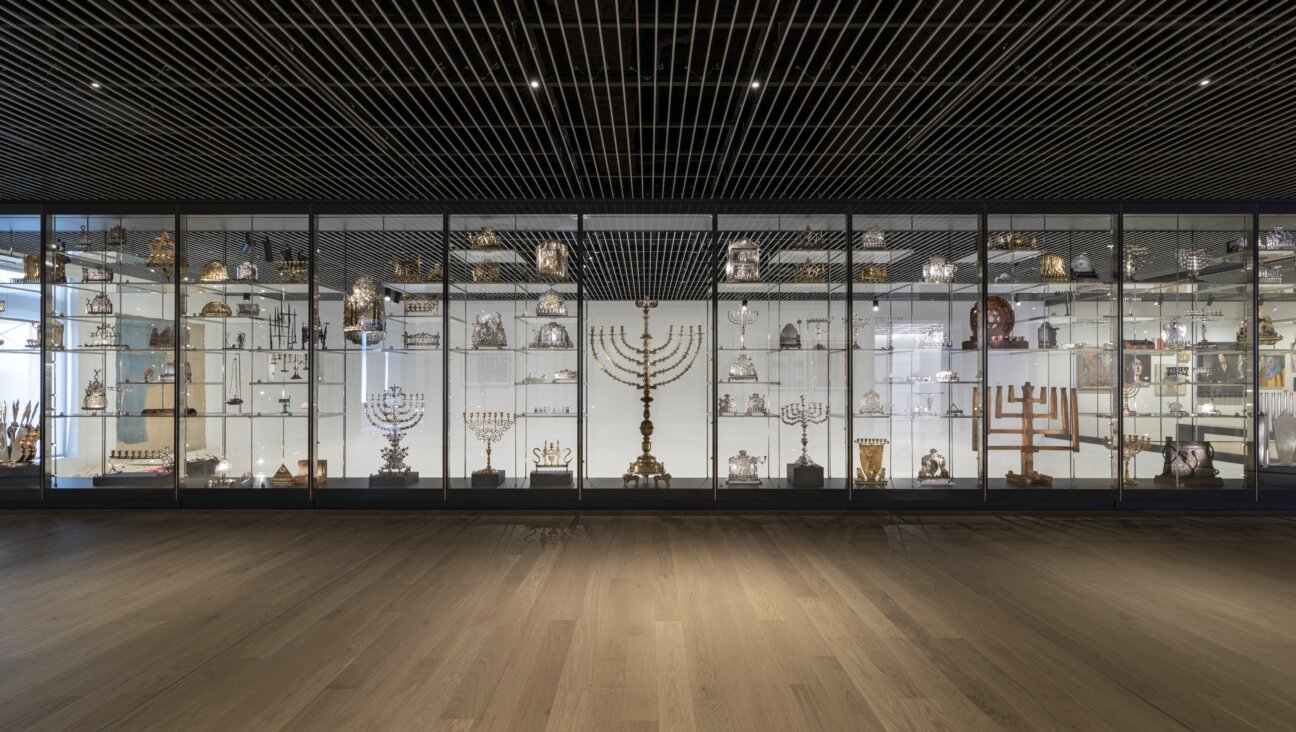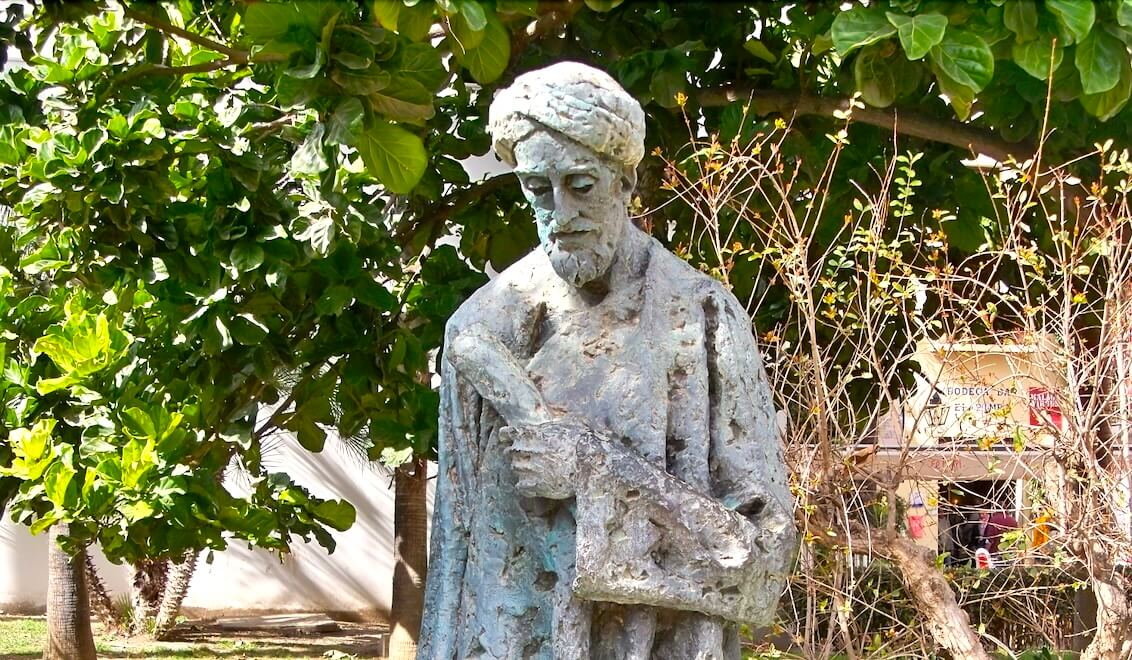For Israelis, These Photos Are Most Iconic

The Most Iconic? 94% of individuals surveyed recognized this photo of Gilad Shalit shortly after being released. Image by Getty Images
Google the words “iconic Israeli photo,” and a predictable image comes up. It is the photograph of the three awestruck Israeli paratroopers against the Western Wall, taken just after Israel captured it from Jordan in 1967. Photographed by David Rubinger, who died last year, the picture symbolizes Israel’s triumph in the Six Day War, a surprise victory that, imbued with religious meaning, set the tiny nation on a path to become a regional power and an occupier.
There’s no question that Rubinger’s picture is iconic, but among Israelis it’s not the most widely recognized photo of an Israeli news event. It’s not even the second most widely recognized photo. It’s the fifth — known by about 67% of Israeli Jews, according to a study published in June of this year in the Journal of Communication.

What Becomes A Legend Most: Three Israeli paratroopers stand at the Western Wall in 1967. Image by Getty Images
The question of whether iconic photographs are in fact widely recognized by the public is at the center of the study, conducted by three researchers in Israel: Akiba Cohen and Sandrine Boudana of Tel Aviv University, and Paul Frosh of Hebrew University of Jerusalem. In addition to the paratroopers photograph, the researchers tested 29 other iconic Israeli and foreign news images to see which ones truly made a mark on Israeli collective memory.
Israel is a fitting setting for a study on iconic photography. The state’s founding in 1948 coincided with the so-called Golden Age of Photojournalism, and its short history has been well documented by a vigorous local and foreign press. Over Israel’s 70 years, the country’s many conflicts have yielded an abundance of dramatic images. As Frosh put it, “Wars are photogenic, unfortunately.” The study, however, does not include all Israelis. Israel’s Jewish majority and its Palestinian Arab minority have such different national stories that they likely have little to no imagery in common, the researchers said. Given this divided reality, the researchers focused on Israeli Jews, intending to survey non-Jews in a later study.

Historic Moment: David Ben-Gurion declares the state of Israel. Image by Getty Images
The first study of its kind to examine public recognition of iconic photographs, its findings provide a glimpse into the Israeli psyche, shedding light on how Israeli Jews think about their own tumultuous history and the photos it has produced. Should the study be replicated beyond Israel — which the researchers plan to do — it could upend assumptions about the images that shape our world, perhaps pushing us toward a more democratic definition of “iconic photograph” that includes the perspective of all viewers, not just cultural gatekeepers.
“The challenge was to grasp the concept of collective memory,” Boudana said. “Is collective memory just the addition of individual memories, or is it something else?”
The study was conducted in a few stages. First, the researchers located iconic photographs from the 1940s onward by examining Israeli high school history books, conducting interviews with historians and photojournalists, and asking for recommendations from colleagues, friends and acquaintances. The researchers then conducted 13 focus groups, asking participants to first suggest photos and later identify the photos culled from their earlier research. This process ultimately yielded a list of 30 images, 15 foreign and 15 Israeli.
Next, these 30 photos were loaded into an online survey that was administered to 1,211 people, a representative sample of Israeli Jews ages 16 to 80. The survey began with questions about the participants’ media and entertainment consumption and preferences in academic subjects, and then moved on to testing photo recognition. Participants were asked to select from four options when looking at a photograph: “I definitely don’t recognize it,” “I don’t think I do,” “I think I do” and “I definitely recognize it.” Those who answered any way except “I definitely don’t recognize it” were asked to name the event the photo depicted. All the participants, whether or not they recognized the photo, were then asked to describe what the image brought to mind.
Analyzing the data, the researchers found that 10 photographs — six from Israel and four from abroad — were truly iconic, accurately recognized by the majority of Israeli Jews.
The most iconic Israeli photograph, recognized by about 94% of the participants in the survey, is revealing. It depicts the release of Gilad Shalit, the Israeli soldier held captive by Hamas in Gaza for five years. In that 2011 photograph, Shalit, gaunt, pale and wearing a baggy military uniform, salutes Prime Minister Benjamin Netanyahu as he disembarks from a plane at the Tel Nof Airbase. Unlike the paratroopers photo, the Shalit picture isn’t associated with a famous photographer. On the agency site Getty Images, the photo is credited to the Israel Defense Forces. The Forward contacted the IDF to learn the name of the photographer, but as of press time the request had not been answered.
The Shalit photo’s high ranking illuminates one of the study’s main findings: Widely known photographs are ones that elicit strong emotions, in the Shalit case conflicting ones. “There was a surprising amount of people that said ’ I feel ambivalently about this photograph,’” Frosh said. The terms of Shalit’s release were highly controversial. In exchange for the single soldier, 1,027 Palestinian prisoners were set free, including many serving life sentences for planning or carrying out attacks that killed Israelis. Participants said the image evoked relief or joy that Shalit was back in Israel with his family, but also fear that the Palestinian prisoners who were let out would strike again, or a feeling of disagreement over the deal itself.

Fatal Vision: A Palestinian youth proudly shows Israeli blood on his hands as he is cheered by fellow protesters at a Palestinian police station in the West bank town of Ramallah 12 October 2000. Image by Getty Images
Gershon Baskin, the Israeli who helped negotiate the Shalit deal by opening an unofficial back channel with Hamas, said he wasn’t surprised that the photo was so widely recognized among Israeli Jews. In his view, it is an image that speaks to Israeli national pride — even if that pride was later tinged with ambivalence.
“No other nation in the world would do this deal that Israel did, and that is what made us special,” he said. “It gives us a good feeling about ourselves.”
The survey’s other top-ranking Israeli news photographs also evoked intense emotions, reflecting moments of “conflict, trauma, and triumph,” according to the study. After the Shalit photo, the second most recognized photo (82.2% recognition) is of Israeli founder David Ben-Gurion declaring the State of Israel at the Tel Aviv Museum of Art in 1948. The third (79%) is of the 1961 Jerusalem trial of Adolf Eichmann, a major architect of the Holocaust who was sentenced to hang in Israel for his deeds. The fourth (76.5%) is of former Israeli prime minister Yitzhak Rabin singing onstage at a Tel Aviv peace rally in 1995, moments before a Jewish terrorist assassinated him. The fifth (67.3%) is the aforementioned paratroopers image. The sixth (60%) is of the lynching in Ramallah in 2000, when two IDF reservists accidentally entered the Palestinian city and were murdered by a mob inside a police station. In the iconic picture, a young Palestinian man shows off his bloodied hands out the window to the crowd gathered below.

Man In A Glass Booth: Adolf Eichmann on trial. Image by Israeli Government Press Office
In terms of foreign photography, a majority of Israeli Jews recognized just four international images. The first (96.9% recognition) is of the twin towers burning on 9/11. The second (59.1%) is Saddam Hussein after he was discovered in hiding in 2003. The third (57.1%) is a photo of a hooded Palestinian kidnapper during the so-called Munich massacre, when 11 Israelis were taken hostage and killed at the 1972 Munich Olympics. The fourth (51.5%) is of the Berlin Wall coming down in 1989.

In The Aftermath Of War: A TV grab taken from Al-Arabiya shows footage of Iraqi dictator Saddam Hussein receiving a checkup after his capture shown during a press conference in Baghdad 14 December 2003. Image by Getty Images
The photographs that weren’t recognized by the Israeli public are perhaps just as revealing as those that were. For instance, just 20.7% of Israeli Jews identified the photo of a Palestinian father shielding his terrified son, Muhammad al-Dura, who died during a clash between Israeli and Palestinian forces in 2000. The photograph, a still from a video by France 2, became instantly famous across the Middle East as a symbol of Israeli oppression. France 2 initially reported that al-Dura died by Israeli fire and that Israel accepted responsibility. But later Israel retracted the statement, suggesting that the photo was staged amid a broad international dispute over the incident.

Traumatic Vision: A Palestinian father shields his son in 2000. Image by Getty Images
The fact that so few Israeli Jews recognized that photo, certainly one of the most iconic Palestinian images from the second intifada, speaks to the deep divide between the two peoples. Most of the Israelis who did recognize the photo repeated the Israeli government line, calling it “Palestinian propaganda,” Frosh said.
Another surprising finding was how few Israelis recognized one of the most famous American photographs of the past 20 years. That’s the picture known as “The Hooded Man,” of an Abu Ghraib prisoner with a pointed black hood over his head, and his hands attached to electrical wires. The 2003 photo, which came to symbolize the torture of Iraqi prisoners, was named one of the 100 “most influential images of all time” by Time magazine. Yet only 1.7% of Israelis recognized it.
The disconnect, Boudana said, could be attributed to the “ivory tower syndrome.” “As academics and even journalists, we are closed in our own system and we assume that these pictures are widely recognized when they are not,” she said. “There are other pictures that we don’t even think about that people know, and we don’t know why.”
The researchers don’t yet have a definitive answer as to why some photos stuck in the Israeli collective memory and others didn’t. One reason, they said, could have to do with the way the photos are recycled in the media, republished on anniversaries, holidays or in relation to other news events. They plan to test this idea in another study by tracking the appearance of the most recognized photos in newspapers and online media.

Twin Towers: For Israelis, one of the most recognizable images is this one of 9/11. Image by Getty Images
Social media could also play a role. One of the reasons that the Shalit photo was so well known, the researchers said, was that it could have reminded participants of a popular meme from around the time it was taken. In another photo from Shalit’s release, Prime Minister Benjamin Netanyahu seems to intrude on an intimate moment between Shalit and his father. To Netanyahu’s critics, the photo represented Netanyahu’s attempt to hijack Shalit’s release for political gain. It spawned a meme known as “Bibi Gump,” after the film in which the title character, Forrest Gump, appears in several American history-making moments. Israelis used photo-editing software on pictures of Netanyahu, known as Bibi, into other historical Israeli photos. In one of them, Netanyahu peeks out of one of the most famous Israeli photographs of all, joining the three paratroopers at the Western Wall in 1967.
Naomi Zeveloff is a freelance journalist based in Tel Aviv.

















